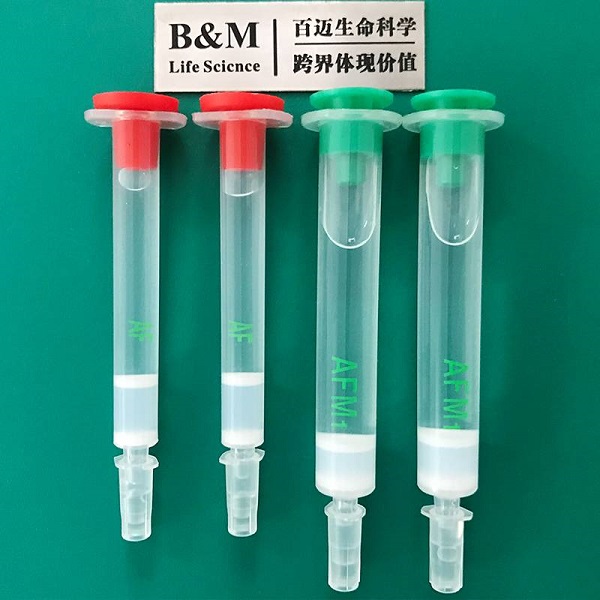According to statistics, there are more than 300 kinds of mycotoxins known, and the commonly seen poisons are:
Aflatoxin (Aflatoxin) corn zhi erythrenone/F2 toxin (ZEN/ZON, Zearalenone) ochratoxin (Ochratoxin) T2 toxin (Trichothecenes) vomiting toxin/deoxynivalenol (DON, deoxynivalenol) Fumar Toxins/Fumonisins (including Fumonisins B1, B2, B3)
Aflatoxin
feature:
1. Mainly produced by Aspergillus flavus and Aspergillus parasiticus.
2. It is composed of about 20 chemical substances with similar structures, among which B1, B2, G1, G2 and M1 are the most important.
3.National regulations stipulate that the content of this toxin in feed shall not exceed 20ppb.
4. Sensitivity: Pig>Cattle>Duck>Goose>Chicken
The effect of aflatoxin on pigs:
1. Reduced feed intake or refusal to feed.
2. Growth retardation and poor feed return.
3. Decreased immune function.
4. Cause intestinal and kidney bleeding.
5. Hepatobiliary enlargement, damage and cancer.
6. Affect the reproductive system, embryonic necrosis, fetal malformation, pelvic blood.
7. The sow’s milk production decreases. Milk contains aflatoxin, which affects suckling piglets.
The effect of aflatoxin on poultry:
1. Aflatoxin affects all kinds of poultry.
2. Cause intestinal and skin bleeding.
3. Liver and gallbladder enlargement, damage and cancer.
4. High levels of intake can cause death.
5. Poor growth, poor egg production performance, deterioration of eggshell quality, and reduced egg weight.
6. Reduced disease resistance, anti-stress ability and anti-contusion ability.
7. Affecting the quality of eggs, it has been found that there are metabolites of aflatoxin in the yolk.
8. Low levels (less than 20ppb) can still produce adverse effects.
The effect of aflatoxin on other animals:
1. Reduce growth rate and feed remuneration.
2. The milk production of dairy cows decreases, and aflatoxin can secrete the form of aflatoxin M1 into milk.
3. It can cause rectal spasm and prolapse of calves.
4. High levels of aflatoxin can also cause liver damage in adult cattle, suppress immune function, and cause disease outbreaks.
5. Teratogenic and carcinogenic.
6. Affect the palatability of feed and reduce animal immunity.
Zearalenone
Features: 1. Mainly produced by pink Fusarium.
2. The main source is corn, and heat treatment cannot destroy this toxin.
3. Sensitivity: pig>>cattle, livestock>poultry
Harm: Zearalenone is a toxin with estrogenic activity, which mainly harms breeding livestock and poultry, and young sows are most sensitive to it.
◆1~5ppm: Red and swollen genitals of gilts and false estrus.
◆>3ppm: The sow and gilt are not in heat.
◆10ppm: The weight gain of nursery and fattening pigs slows down, the piglets prolapse from the anus, and the splayed legs.
◆25ppm: occasional infertility in sows.
◆25~50ppm: the number of litters is small, the newborn piglets are small; the pubic area of newborn gilts is red and swollen.
◆50~100pm: false pregnancy, breast enlargement, milk oozing, and signs of pre-partum.
◆100ppm: Persistent infertility, ovarian atrophy becomes smaller when taking other sows.
T-2 toxin
Features: 1. Mainly produced by three-line sickle fungus.
2. The main sources are corn, wheat, barley and oats.
3. It is harmful to pigs, dairy cows, poultry and humans.
4. Sensitivity: pigs> cattle and livestock> poultry
Harm: 1. It is a highly toxic immunosuppressive substance that destroys the lymphatic system.
2. Harm to the reproductive system, can cause infertility, abortion or weak piglets.
3. Reduced feed intake, vomiting, bloody diarrhea and even death.
4. It is currently considered to be the most toxic toxin to poultry, which can cause oral and intestinal bleeding, ulcers, lower immunity, lower egg production, and weight loss.
Post time: Aug-24-2020

